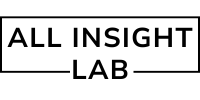Introduction: The Dawn of Autonomous Agents
Python Meets AGI: Coding in the Age of Autonomous AI Agents. Imagine telling your computer, “Plan my entire Europe trip with the best deals, personalized recommendations, and a checklist of required documents” — and it actually does it. No clicks. No forms. No tabs. Just results.
This isn’t science fiction anymore. We’re entering the age of autonomous AI agents, and Python is the backbone of this revolution.
In 2025 and beyond, we’re witnessing the birth of a new generation of intelligent tools — ones that don’t just follow instructions but reason, plan, and act on your behalf. While the term AGI (Artificial General Intelligence) still feels like a moonshot, we are already seeing Agentic AI systems that behave in a disturbingly intelligent, semi-autonomous way.
From AutoGPT to LangGraph, Python is driving this next phase of automation. So if you’re a Pythonista, buckle up — you’re coding in the age of AGI.
Table of Contents
What Is an Autonomous AI Agent?
Let’s clarify a few terms.
A traditional AI model (like GPT or BERT) just responds to a prompt. It’s like a clever parrot — good at imitation, bad at memory or long-term goals.
An autonomous AI agent, on the other hand:
- Thinks in goals, not just single prompts.
- Has a memory of past actions and results.
- Plans a sequence of steps.
- Makes decisions dynamically (based on outcomes).
In other words, it’s a system that can operate with minimum human input, across various tasks, in real-world environments.
Python frameworks like LangChain, AutoGPT, and CrewAI make this possible.
Python’s Role in the Agentic Revolution
Why is Python leading this space?
Because it’s:
- Flexible and readable
- Has the largest AI ecosystem
- Supports APIs, orchestration, memory, vector databases
- Plug-and-play with OpenAI, HuggingFace, Pinecone, and more
Here are the key Python tools powering this wave:
1. LangChain
LangChain lets you build intelligent agents by chaining together language models, memory, and tools (like search, math, code execution).
Example:
You can create a ResearchAgent that:
- Takes a topic
- Searches online
- Summarizes key points
- Emails the results to you
🧠 Learn more: https://www.langchain.com/
2. AutoGPT
AutoGPT was the first viral project to showcase an autonomous AI agent. It uses GPT-4 to:
- Think of goals
- Break them into tasks
- Execute those tasks via internet, file system, or Python
Example:
Give it a goal like “Start an online dropshipping business.” It will:
- Research a niche
- Find suppliers
- Build a simple website
- Suggest marketing plans
Try it out: https://github.com/Torantulino/Auto-GPT
3. CrewAI
CrewAI adds a team structure to agents. You assign roles (Researcher, Analyst, Coder), and they collaborate like humans.
Each “agent” has a specialty, and they talk to each other to achieve complex goals.
Example:
A team that:
- Researches competitors
- Builds a marketing strategy
- Writes and schedules content
Official site: https://docs.crewai.io
Building Your First Agent in Python (Conceptually)
Let’s break down the logic of an autonomous agent in Python:
# Pseudo-structure
goal = "Create a report on EV car market trends in 2025"
agent = Agent(
memory=LongTermMemory(),
tools=[WebSearch(), PDFGenerator(), EmailClient()],
llm=OpenAI(),
planner=TaskPlanner()
)
agent.run(goal)
Each part plays a role:
memory: stores previous resultstools: external actions (e.g. search, code, save files)planner: breaks goals into tasksllm: generates decisions, text, summaries
You can build such agents using:
- LangChain + OpenAI
- Pinecone (vector DB for memory)
- Toolkits like
serpapi,python-docx, orpyautogui
Real-Life Applications Already Emerging
- Virtual Executives
- Give them goals like “research funding options” or “create competitor reports.”
- Agents handle mundane decisions while humans focus on strategy.
- Autonomous Coding Bots
- Build entire websites, test APIs, fix bugs — based on your one-liner goals.
- Tools: GPT-Engineer, Smol AI Dev
- Personal Life Managers
- Book flights, plan meals, schedule appointments — just tell them your preferences.
- AI Research Assistants
- Summarize papers, extract insights, and even write rebuttals for scientific submissions.
The Limitations (and Why That’s a Good Thing)
Even though these agents look promising, they’re still not AGI.
Here’s what they struggle with:
- Long-term memory retention
- Common sense reasoning
- Context loss across long tasks
- Trust/safety (they might do dumb or unsafe things)
That’s actually good news for developers — because it means the field is young, evolving, and you can still innovate.
This isn’t a saturated market. It’s a gold rush.
What’s Coming by 2026?
Here’s where things are heading:
✅ Better memory with vector databases (Pinecone, Weaviate)
✅ More powerful, local LLMs (Meta’s LLaMA, Mistral)
✅ OS-level agents that live in your phone or desktop
✅ Open-source AGI foundations being built in Python
✅ Agent marketplaces where you buy and sell autonomous AI workers
Python’s role is likely to evolve from just coding agents to designing digital behaviors — a new job title might even be “Agent Architect.”
Conclusion: You’re Coding the Future
AGI is no longer a futuristic buzzword. It’s quietly becoming real — task by task, goal by goal — powered by Python, autonomy, and imagination.
As a developer, this is your chance to move from building static apps to dynamic, intelligent agents. Whether you’re automating workflows, creating AI assistants, or designing multi-agent systems — Python gives you the steering wheel to drive the next decade of AI innovation.
So go ahead — build your first agent. Talk to it. Let it plan your week. Let it break. Let it learn. Let it surprise you.
Because the future won’t be coded one function at a time — it will be guided by goals, and Python will help you get there.
Find more Python content at: https://allinsightlab.com/category/software-development

